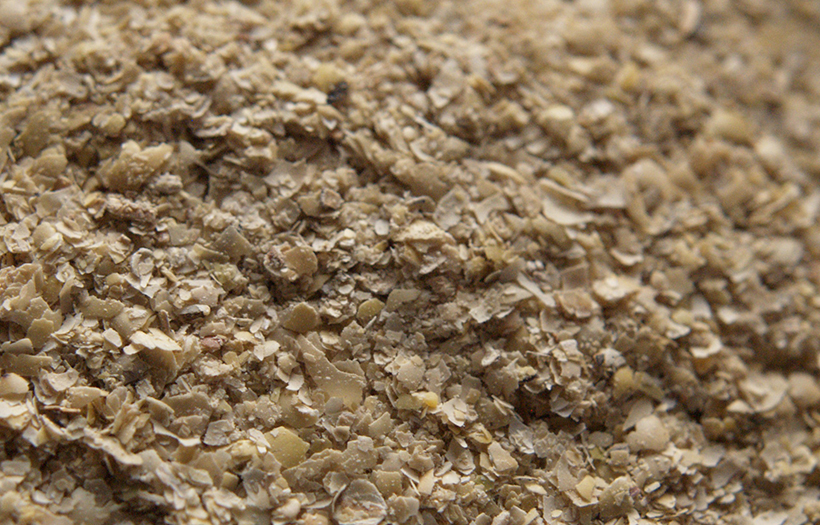Why use Soy in Horse Feed?

Soy has been a standard ingredient of horse feeds for many years. It can be found in several forms in equine formulations, each serving a different purpose. For horses, the most common soy ingredients are soybean meal, soy oil and soy hulls.
Soybean meal is the primary soy product used in horse feeds. It has been fed to horses and other species for more than 75 years. Soybean meal was once solely a by-product of the soybean oil industry but today it is a major protein source for horses and other livestock. It is a good choice for horses because it is one of the best sources of dietary essential amino acids which are present in ratios supporting growth, muscle development and overall health. In particular, the essential amino acids lysine, cystine and methionine are found in soybean meal in ratios which meet equine dietary requirements much better than other protein sources available for livestock feeds.
Soybean oil is used as a source of fat in horse feeds. Although all oils are 100% fat and there are no real caloric differences between them, there are different qualities of oils. Of particular interest are the omega 6 and omega-3 fatty acid ratios. Indeed, these fatty acids, which have an effect on inflammation and the immune system, must be provided by the horse’s diet since it cannot produce them on his own. The ratio of omega-6:omega-3 fatty acids in an equine diet should be less than 10:1, and ideally closer to 5:1. At 7:1, soybean oil has a favourable omega 6:3 fatty acid ratio when compared to other common fat sources such as corn oil at 46:1 and rice bran oil at 19:1.
Soybean hulls are the skin or shell which covers the soybean and they are used in horse feeds as a source of fibre. Fibre is essential to the equine diet and provides 30–70% of a horse’s digestible energy requirements. It is to be noted, however, that not all fibre ingredients are created equal! Soybean hulls are a highly digestible and rapidly fermentable fibre source, also known as a “super fibre.” They provide a good level of digestible energy for horses as they contain high levels of pectin. A good way to compare the quality of fibre ingredients is to look at the lignin to NDF (neutral detergent fibre) ratio. This is as a measure of digestibility where the lower ratio, the better the digestibility. Soybean hulls have a good lignin:NDF ratio at 3.7% compared to some other common ingredients such as oat hulls at 8.2%, wheat bran at 9% and rice bran at 48%. Soybean hulls are digested mostly in the cecum and since they contain relatively small amounts of starch, they are a safe and healthy ingredient for equine diets.
Soybeans cannot be fed raw to horses as they do contain some substances considered to be anti-nutritive which can be destroyed by heat treatment. Soybean meal must therefore be properly heated during processing to provide optimum protein for animals. This will decrease the soybeans’ digestive enzyme inhibitor content. However, on the one hand, if the soybean meal is underheated, the inhibitors’ effects will not be sufficiently reduced, resulting in low protein contents and feed efficiency, as well as reduced growth rates. On the other hand, overheating soybean meal can inactivate or even destroy essential amino acids such as lysine, methionine and cystine. This is why soybeans should be properly processed before it is added to equine diets.
Soybeans also contain phytoestrogens—naturally occurring compounds found in many plants—which are not completely destroyed by heat treatment. Some horse owners may be concerned about phytoestrogens in soy, but there is very limited data available that relates specifically to equines, and published studies conducted on humans or rodents will not necessarily have significance for horses, as their physiological differences are considerable. Moreover, soybeans are not the only source of phytoestrogens in an equine diet—alfalfa and clover can contain phytoestrogens. There is currently no solid evidence that phytoestrogens are harmful to horses.
To summarize, soybeans, in various forms, are quality protein, fat and fibre ingredients which work very well in creating a healthy and balanced diet for horses. Soy is a superior choice for equine feeds when compared to other ingredients available and it has been fed to horses for many years for this reason. And finally, since equine physiology and diet is considerably different from that of a human, we cannot assume that the reported issues in humans apply to horses.
